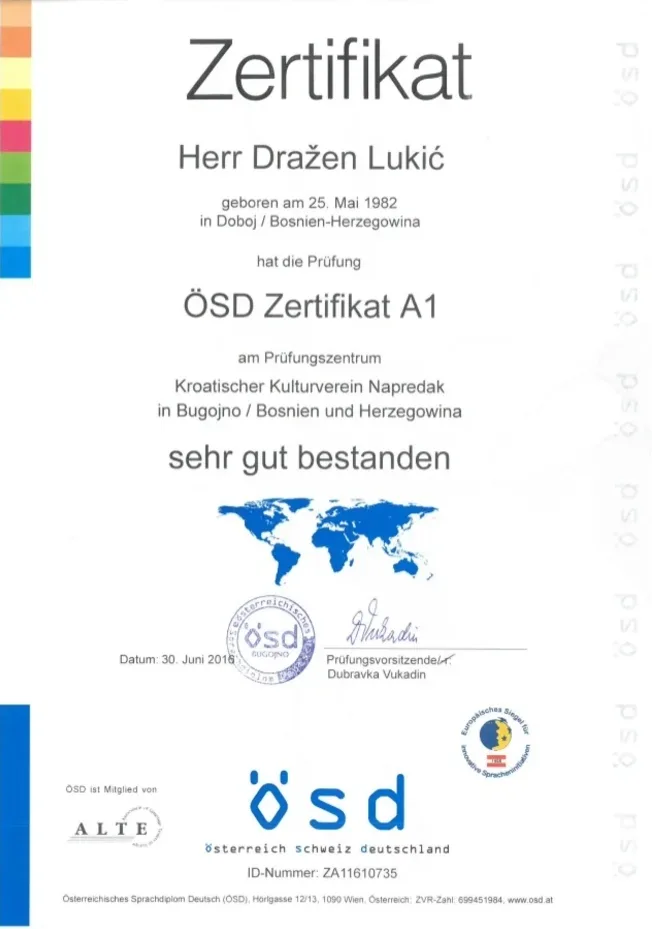Comprehending the German as a Foreign Language Exam
Learning a new language opens doors to many chances, both personal and professional. Among the myriad of languages spoken globally, German stick out as an important language, particularly in the context of Europe. With over 90 million native speakers and thriving economies in Germany, Austria, and Switzerland, proficiency in German can supply substantial benefits. For non-native speakers aiming to confirm their German language abilities, the German as a Foreign Language exam works as a necessary credential.
Introduction of the German as a Foreign Language Exam
The German as a Foreign Language exam, typically referred to as TestDaF (Test Deutsch als Fremdsprache), is a worldwide acknowledged proficiency test developed for non-native speakers. It assesses people' reading, writing, listening, and speaking abilities in German. The examination is a crucial stepping stone for those looking for to study or work in German-speaking countries, as it helps in determining the prospect's ability to use German in academic, expert, and everyday contexts.
Who Can Take the Exam?
While anyone can take the TestDaF no matter age, it is mostly targeted at:
Students wanting to use for universities in Germany or other German-speaking nations.
Experts seeking to enhance their profession prospects in German-speaking areas.
Immigrants seeking citizenship or irreversible residency in Germany, Austria, or Switzerland.
Levels of Proficiency
The TestDaF assesses candidates throughout four essential parts which line up with the Common European Framework of Reference for Languages (CEFR). It is segmented into the list below levels:
TDN 3: Intermediate level, appropriate for many university courses.
TDN 4: Upper intermediate level, frequently required for scholastic programs that require strong language skills.
TDN 5: Advanced level, expected for highly specialized research studies or professional work in German-speaking environments.

Exam Structure
The structure of the TestDaF includes 4 sub-tests, which jointly take approximately 3.5 hours to complete. Here's what prospects can expect:
Listening Comprehension (40 minutes):.
Audio recordings related to everyday circumstances and scholastic situations.
Candidates address questions based on the product.
Reading Comprehension (60 minutes):.
Texts from various fields like literature, social sciences, and lives sciences.
Concerns examine understanding of the main point and detailed info.
Written Expression (60 minutes):.
A writing job, frequently including the analysis of a provided topic or text.
Candidates need to show clearness, coherence, and appropriate design.
Spoken Expression (30 minutes):.
An interactive speaking test carried out with an inspector.
Prospects are assessed on their ability to participate in discussions, provide discussions, and react to concerns.
Getting ready for the TestDaF.
Preparation for the TestDaF is important, as it gives prospects the finest opportunity to be successful. Here are some methods and resources to think about:.
Research Study Various Resources.
Language Courses: Enroll in extensive German language courses customized for TestDaF preparation.
Online Resources: Utilize platforms like Duolingo, Babbel, or Goethe Institute's online offerings.
TestDaF-specific products: Acquire practice tests from the TestDaF official site or language bookstores.
Practice Regularly.
Speaking: Engage in conversation clubs or partner with language exchange partners.
Composing: Practice writing essays and letters in German, looking for feedback from native speakers or instructors.
Listening and Reading: Immerse yourself in German media by viewing films, listening to podcasts, and reading papers.
Mock Exams.
Taking mock exams under timed conditions can assist familiarize prospects with the test structure and enhance time management skills. Organizations regularly use practice tests to help trainees in examining their readiness.
Significance of the Exam.
The significance of the TestDaF extends beyond mere academic validation. Here are numerous reasons taking this exam is beneficial:.
University Admissions: Many German universities need a specific TestDaF score for admission to programs taught in German.
Profession Opportunities: Proficiency throughout the 4 language abilities can enhance employability in international business or companies in German-speaking regions.
Cultural Engagement: Mastery of the language makes it possible for deeper connections with German culture, literature, and history.
Migration: Proficiency in German might be necessary for residency permits or long-term residency applications.
Frequently asked questions.
What rating do I require to pass the TestDaF?
There is geothezertifikat4all.de varies by institution. Normally, a rating of TDN 4 is beneficial for university admissions.
How often can I take the TestDaF?
You can take the TestDaF multiple times. However, it is ideal to permit enough time for enhancement in your language abilities before reattempting the test.
The length of time are the outcomes legitimate?
TestDaF results are usually legitimate for 2 years. It is advisable to check the specific requirements of the organization or organization you are using to.
Where can I take the TestDaF?
The assessment is offered at various screening centers worldwide. The official TestDaF website supplies a locator tool for finding neighboring screening centers.
Is there a specific age limit for taking the TestDaF?
There is no age limit for taking the TestDaF. Whether a teenager or an adult, anybody thinking about proving their German language skills can sign up for the exam.
Conclusion.
The German as a Foreign Language exam is an essential part for anybody seeking to study, work, or immerse themselves in German-speaking societies. With devoted preparation and the best resources, candidates can browse the exam effectively and display their proficiency in the German language, opening many chances in education and career paths. Accepting the challenge of discovering German not just results in scholastic or professional improvements but also enriches individual perspectives through the understanding of a brand-new culture.
